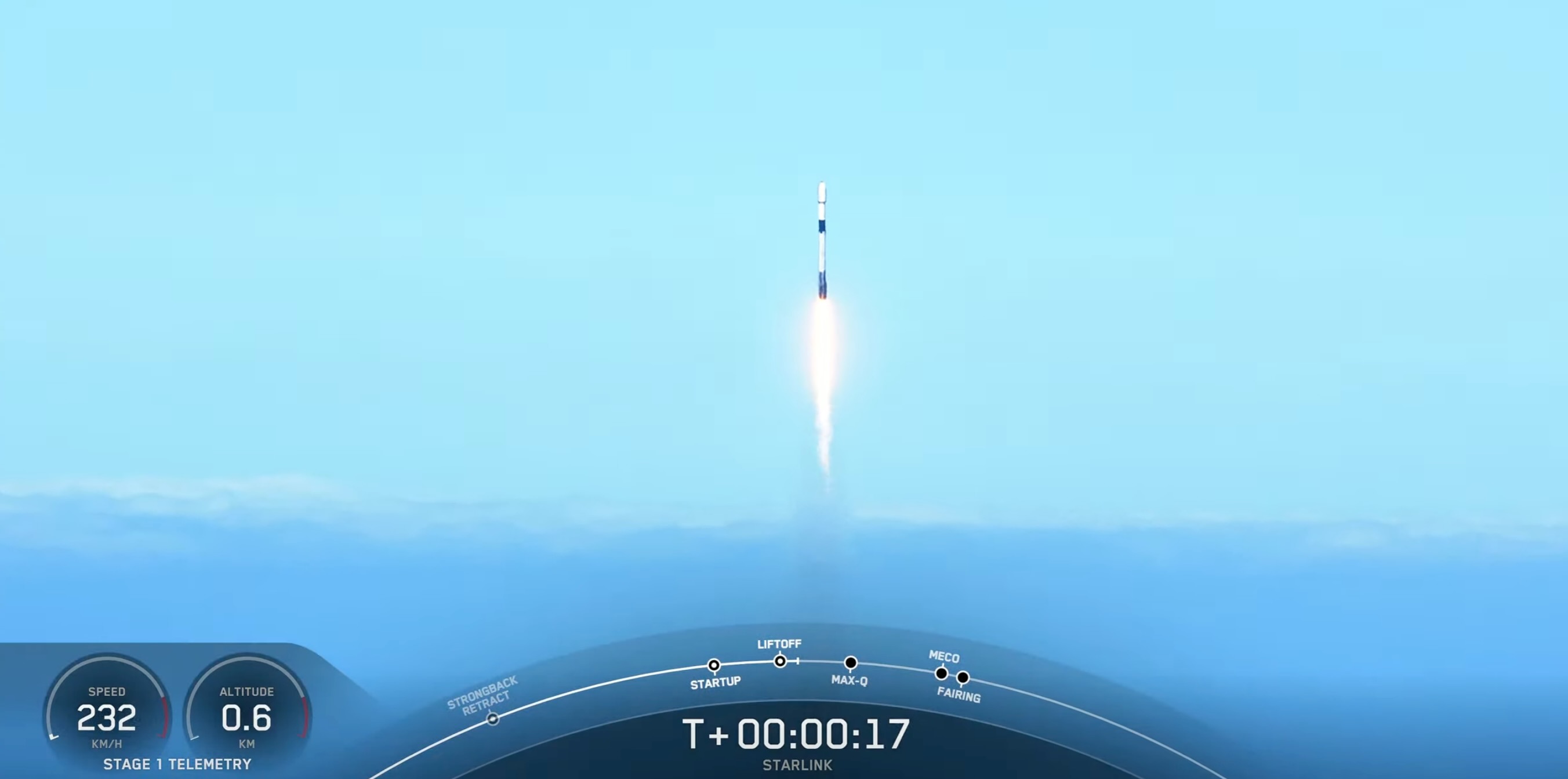SpaceX launches 51 Starlink satellites to orbit after weather delays
SpaceX launched another big batch of its Starlink internet satellites to orbit on Friday (March 3) after a series of weather delays.
A Falcon 9 rocket topped with 51 Starlink spacecraft lifted off from California's Vandenberg Space Force Base Friday at 1:38 p.m. EST (1838 GMT; 10:38 a.m. local California time).
Eight minutes and 45 seconds after launch, the Falcon 9's first stage came back to Earth for a pinpoint landing on the SpaceX droneship Of Course I Still Love You, which was stationed in the Pacific Ocean off the California coast.
Related: 10 weird things about SpaceX's Starlink internet satellites

It was the 12th launch and landing for this particular booster, according to a SpaceX mission description. Among the booster's 11 other missions were Crew-1 and Crew-2, SpaceX's first operational astronaut flights to the International Space Station for NASA.
The Falcon 9's upper stage, meanwhile, continued soaring toward low Earth orbit, ultimately deploying the Starlink satellites there as planned about 15.5 minutes after liftoff.
Friday's mission had been delayed for days. SpaceX had been targeting Tuesday (Feb. 28) for the liftoff but moved it to Thursday, apparently to deconflict with prep work for the early-Thursday (March 2) liftoff of the Crew-6 astronaut mission from Florida. Then, on Thursday, the company announced another weather delay, shifting the launch to Friday.
Breaking space news, the latest updates on rocket launches, skywatching events and more!
Friday's flight came just a few days after another Starlink launch: A Falcon 9 lofted 21 Starlink "V2 mini" satellites from Cape Canaveral Space Force Station in Florida on Monday evening (Feb. 27).
The V2 mini is a next-generation variant that's more capable than older Starlink spacecraft, such as the 51 satellites that went up on Friday. And V2 minis are bigger than their predecessors as well; they're small only in relation to the standard V2s, future satellites that are designed to launch aboard SpaceX's giant Starship Mars rocket, which is still in development.
SpaceX has already launched more than 4,000 Starlink satellites to orbit, but the megaconstellation will continue to grow far into the future. Elon Musk's company has permission to loft 12,000 of the spacecraft and has applied for approval to deploy an additional 30,000 as well.
The two Starlink missions are part of a busy week for SpaceX, which also launched Crew-6 to the International Space Station from Kennedy Space Center in Florida at 12:34 a.m. EST (0534 GMT) on Thursday.
Crew-6 was originally supposed to fly early Monday, but that attempt was scrubbed late in the countdown due to a ground-system issue. Projected bad weather pushed the next attempt to Thursday.
Editor's note: This story was updated at 12:25 p.m. EST on Feb. 28 with the new launch date of March 1 for the Starlink mission, then again at 3:15 p.m. EST on March 1 with the new target date of March 2, then again at 12:30 p.m. EST on March 2 with the new launch time of 1:38 p.m. EST on Friday, March 3. It was updated again at 2:10 p.m. EST on March 3 with news of successful launch, rocket landing and satellite deployment.
Mike Wall is the author of "Out There" (Grand Central Publishing, 2018; illustrated by Karl Tate), a book about the search for alien life. Follow him on Twitter @michaeldwall. Follow us on Twitter @Spacedotcom or Facebook.

Michael Wall is a Senior Space Writer with Space.com and joined the team in 2010. He primarily covers exoplanets, spaceflight and military space, but has been known to dabble in the space art beat. His book about the search for alien life, "Out There," was published on Nov. 13, 2018. Before becoming a science writer, Michael worked as a herpetologist and wildlife biologist. He has a Ph.D. in evolutionary biology from the University of Sydney, Australia, a bachelor's degree from the University of Arizona, and a graduate certificate in science writing from the University of California, Santa Cruz. To find out what his latest project is, you can follow Michael on Twitter.
